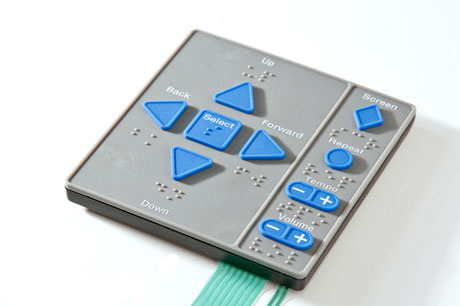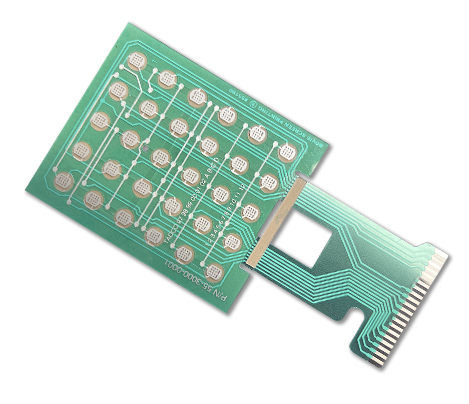Discover How Membrane Switches Support Touch-Sensitive Applications with Accuracy
Discover How Membrane Switches Support Touch-Sensitive Applications with Accuracy
Blog Article
The Ultimate Source on Membrane Layer Changes: Layout, Capability, and Applications
Membrane switches over act as an interesting junction of layout and performance, playing an essential duty in modern-day interface throughout various markets. This resource unboxes the vital components that add to their performance, including visuals overlays and circuit traces, while likewise clarifying the mechanisms behind their pressure activation. As we explore the diverse applications of membrane layer switches, it ends up being noticeable that their flexibility and sturdiness are important in settings ranging from health care to customer electronic devices. The subtleties of their design and functional principles might disclose also deeper insights worth considering.

Comprehending Membrane Buttons
Membrane buttons are a kind of interface innovation commonly made use of in different digital devices, characterized by their slim, versatile style and performance. These buttons include multiple layers that consist of visuals overlays, sticky layers, and wiring, allowing a efficient and compact interface for individuals. They can be discovered in home appliances, clinical devices, and industrial control board, providing a trusted technique for customer communication.
One of the main benefits of membrane layer switches is their capacity to withstand contaminants such as dirt and moisture, making them appropriate for settings where durability is vital. Their inconspicuous style enables smooth integration into various applications, while the customizable visuals overlays enhance individual experience by supplying clear visual responses. In addition, membrane layer switches can suit a selection of technologies, such as tactile responses and backlighting, more boosting their use.
The manufacturing procedure for membrane switches over usually involves display printing, die-cutting, and lamination methods, ensuring precision and consistency in manufacturing. Overall, membrane switches over represent a efficient and versatile remedy for contemporary digital gadgets, incorporating performance with aesthetic appeal in customer interface layout.
Secret Parts and Design Aspects
A range of crucial components and layout components collaborated to create an efficient membrane layer button. At the core, the visuals overlay serves both visual and functional functions, offering an user-friendly interface while protecting interior components from environmental elements. The selection of products, commonly polyester or polycarbonate, affects toughness and tactile feedback.
Beneath the overlay, the glue layer ensures the button sticks securely to the substrate, which can be steel, glass, or plastic. The spacer layer is crucial, as it preserves the required gap in between the circuit and the overlay layers, enabling efficient actuation. Membrane Switches. Circuit traces, usually made from conductive ink or adhesive, are printed on a versatile substratum, making it possible for electric signals to be transmitted when stress is used
Style factors to consider likewise include the plan of responsive domes or embossing that supply physical feedback to the user, enhancing the overall experience. In addition, the layout and spacing of the buttons need to be maximized for ease of usage, guaranteeing that customers can browse around this site browse the user interface intuitively. Generally, these elements and design elements function synergistically to produce a trustworthy, useful membrane layer button tailored to particular applications.
Functionality and Procedure System
At the heart of reliable capability for membrane switches over exists their functional device, which facilitates individual communication with a simple yet efficient style. These switches operate the principle of stress activation, where a customer uses pressure to a marked area of the button (Membrane Switches). This action presses the layers of the switch, completing an electric circuit that sends out a signal to the connected tool
The building commonly includes a leading visuals layer, an adhesive spacer layer, and a bottom circuit layer, which jointly create a durable user interface. When pressure is used, the top layer breaks down against the bottom circuit layer, allowing conductive traces to link. This layout not only enables clear tactile responses but also guarantees sturdiness and reliability, as the switches are usually resistant to dust and dampness.
In addition, the flexibility of membrane layer switches permits combination with numerous modern technologies, consisting of LED indications and microcontrollers, improving their functionality. By providing a structured interface that lessens mechanical wear, membrane switches stay a popular selection in applications ranging from consumer electronic devices to industrial devices, ensuring optimal performance and customer satisfaction official website throughout varied settings.
Kinds of Membrane Layer Buttons

An additional substantial group is brightened membrane layer buttons, which incorporate backlighting to boost visibility in low-light conditions. These switches are typically used in control panels and dashboards where clear visibility is essential.
Furthermore, there are customized membrane switches over designed to meet particular dimensional, visual, and useful needs. These modifications can consist of special forms, colors, and designs, permitting smooth assimilation right into various gadgets.

Applications Across Various Industries
How do membrane switches enhance performance throughout varied industries? In the clinical market, membrane layer switches play a critical function in gadgets such as diagnostic tools and individual tracking systems, where integrity and ease of cleaning are paramount.
In the auto market, membrane layer switches are generally utilized in dashboards and control board, providing intuitive controls that improve motorist safety and security and ease. The consumer electronics sector likewise takes advantage of their lightweight and adjustable functions, allowing sleek styles for smart devices and home appliances.
Additionally, membrane buttons discover applications in commercial automation, where they contribute to efficient equipment procedure and tracking systems. Their resistance to dust and dampness ensures functionality popular problems (Membrane Switches). Additionally, the food and beverage market employs membrane layer switches for devices control, where health and sturdiness are vital
Final Thought
To conclude, membrane layer changes stand for a crucial technology in individual interface technology, characterized by their special layout and performance. Their crucial elements, including graphic overlays and circuit traces, add to their functional performance through stress activation. The versatility of membrane layer switches promotes their application across diverse markets, from clinical tools to customer electronics. This comprehensive understanding reinforces the value of membrane switches in boosting item functionality and sturdiness in modern technological settings.
Membrane changes offer as an intriguing junction of design and capability, playing a critical function in modern individual interfaces across numerous industries.Membrane buttons are a type of individual pop over to this site interface technology extensively utilized in various digital devices, characterized by their thin, versatile style and capability.At the heart of reliable functionality for membrane layer changes lies their functional device, which facilitates customer communication with an easy yet reliable style. These switches operate on the concept of stress activation, where an individual applies pressure to an assigned location of the switch.In conclusion, membrane layer changes represent an important advancement in user interface modern technology, identified by their special style and performance.
Report this page